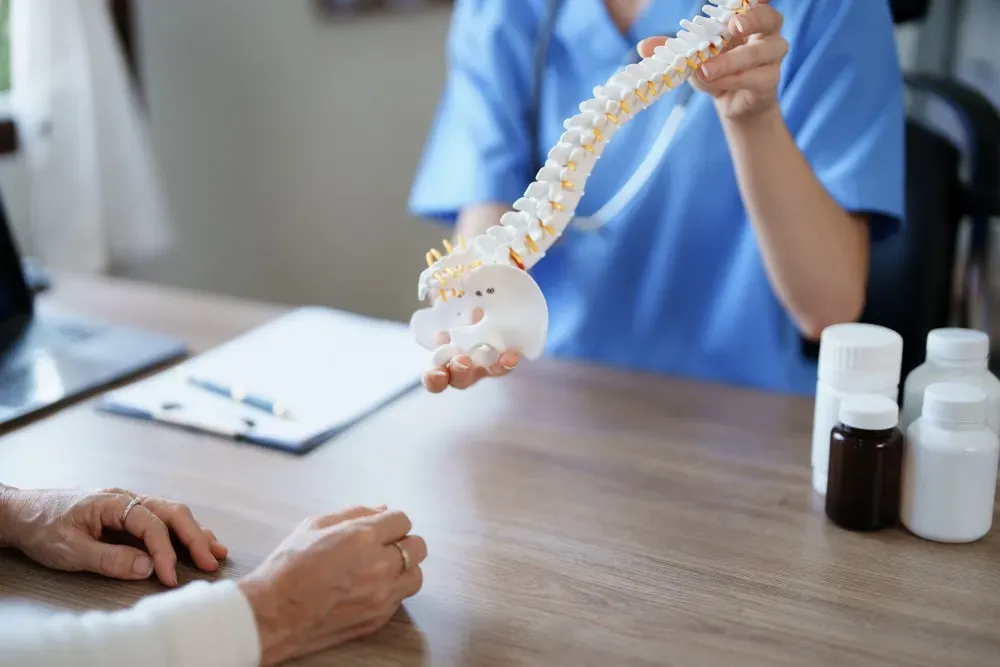Neurosurgery & Orthopedic Surgeons in Jacksonville

Tips for Getting Rid of That Neck Hump
We’ve got good news if you’re struggling with a neck hump that’s becoming too obvious to ignore. There are ways to prevent or reverse the process and eliminate the discomfort it can cause. Check our tips for getting rid of a neck hump.
More formally known as kyphosis, a neck hump is often referred to as a “dowager’s hump” since it’s most common in postmenopausal females with decreased bone density due to osteoporosis. However, anyone can develop a rounded upper spine that causes an unflattering and sometimes painful hump.
Our team at Integrity Spine & Orthopedics in Jacksonville and Middleburg, Florida, offers state-of-the-art care for all your orthopedic needs. We’re also committed to providing the information you need to help prevent painful musculoskeletal disorders from disrupting your mobility and quality of life.
Read more about kyphosis and our tips for preventing or reducing a neck hump.
Kyphosis basics
Kyphosis is characterized by an abnormal spinal curvature at the base of the neck, leading to a noticeable hump. Along with cosmetic effects, moderate to severe kyphosis may also cause rounded shoulders, difficulty with balance, increased incidence of headaches, and other health effects.
While it’s commonly associated with aging, several underlying factors can contribute to the development of a neck hump. For instance, Cushing’s disease causes excess cortisol production, which can result in excess fat accumulating at the base of the neck.
It may have a similar appearance, but the hump caused by Cushing’s disease, excess weight, or another endocrine disorder is not related to the spine.
Thus, preventing and reversing kyphosis starts with an accurate diagnosis, which an Integrity Spine & Orthopedics evaluation can accomplish.
Tips for getting rid of a neck hump
Kyphosis related to spinal issues can arise from:
Poor posture
One of the most common causes of a neck hump is poor posture. Spending long hours hunched over computers, smartphones, and other devices can lead to a forward-head posture that pulls the upper spine out of alignment. Over time, this can cause a hump at the base of the neck.
Tips for preventing or reversing kyphosis related to poor posture include:
- Maintaining an ergonomic workspace
- Taking frequent breaks to stretch and move
- Practicing good standing and sitting posture
- Correcting spinal alignment via posture-correcting exercises
- Using a pillow to support the natural curve of your neck as you sleep
- Avoiding sleeping on your stomach
Your Integrity Spine & Orthopedics specialist may recommend a formal physical therapy program to help you develop correct posture. You may also benefit from yoga, tai chi, and other activities focusing on balance and alignment.
Osteoporosis
Osteoporosis, a condition characterized by decreased bone density that weakens bones, can lead to the development of a neck hump.
When the vertebrae in the spine become fragile, they can collapse or compress, causing kyphosis. This can cause significant pain and difficulty with balance and mobility.
Steps to help prevent osteoporosis include:
- A bone-healthy nutrition plan with adequate calcium and vitamin D
- Weight-bearing exercise programs such as walking to help strengthen bones
- Strengthening exercises that target muscles supporting the spine
- Age-appropriate bone density screenings
There is no cure for osteoporosis, but early diagnosis and treatment can help stall bone loss and decrease your risk of kyphosis, fractures, and other complications.
Degenerative disc disease
As we age, the discs in our spine can degenerate and lose their height, leading to changes in the curvature of the spine. This can result in a noticeable hump at the base of the neck.
Ways to manage degenerative disc disease and help prevent complications like kyphosis include:
- Physical therapy to strengthen the muscles supporting the spine
- Walking, swimming, or other low-impact exercise routines
- Adequate hydration
- A healthy diet of whole grains, fruits, vegetables, and lean meats to nourish the spine
- Avoiding repetitive motion or overuse activities at home, work, or during sports training
If you’re having significant pain or mobility problems, our team may recommend injection-based therapies or medications to reduce inflammation and control discomfort. Surgery may be an option if conservative measures fail.
Don’t ignore your spinal health. Schedule a visit at Integrity Spine & Orthopedics today by calling the office or requesting an appointment online.



